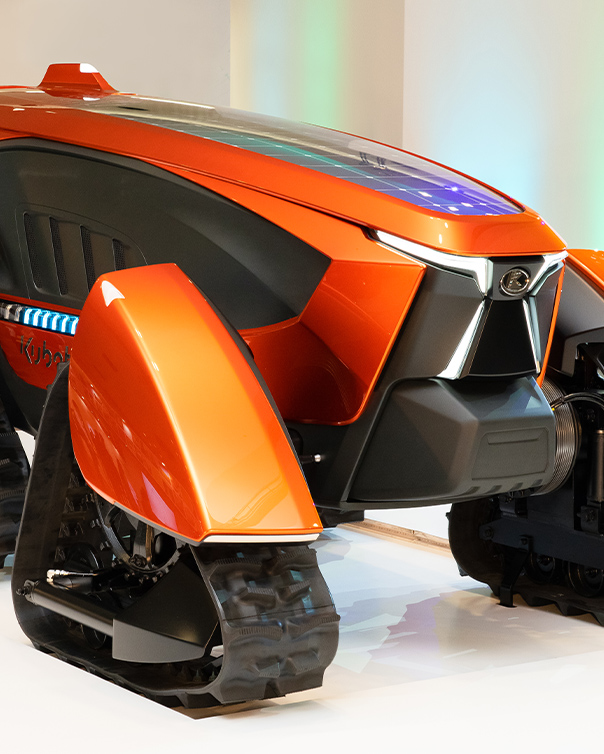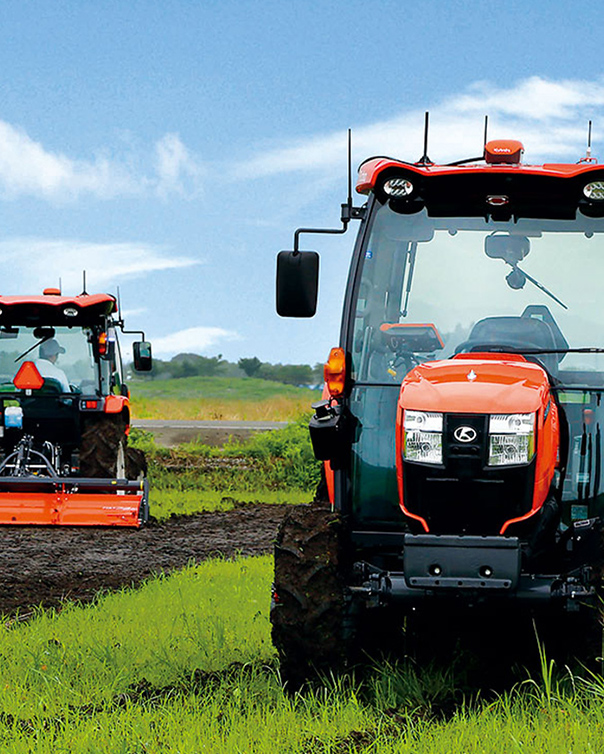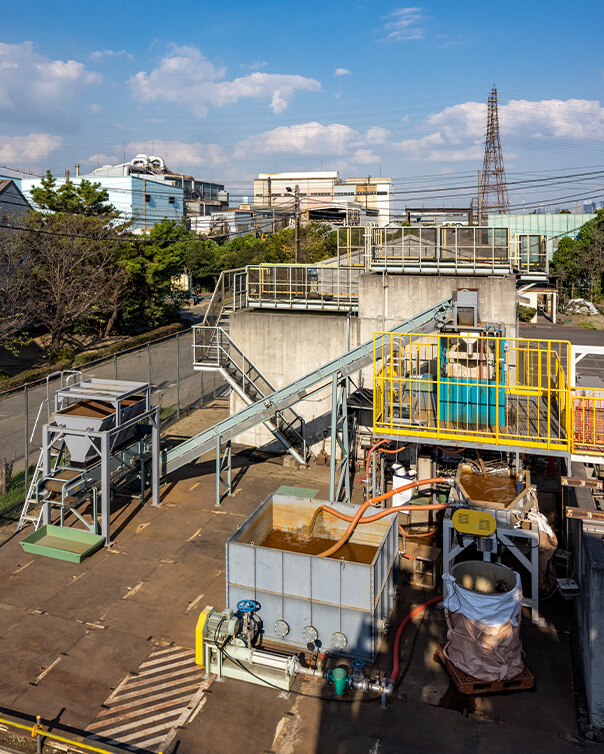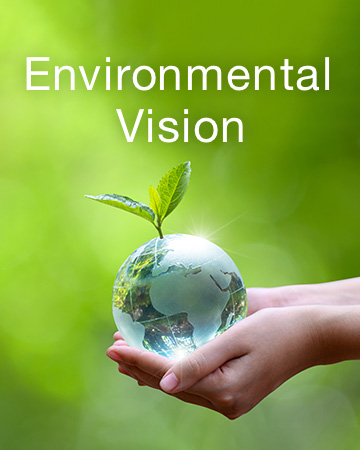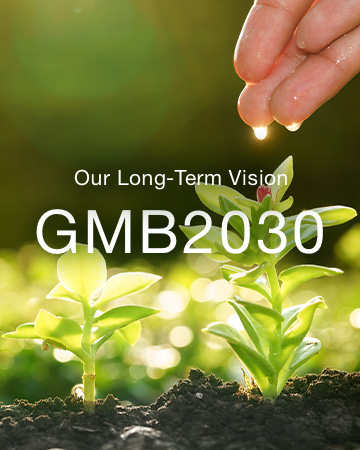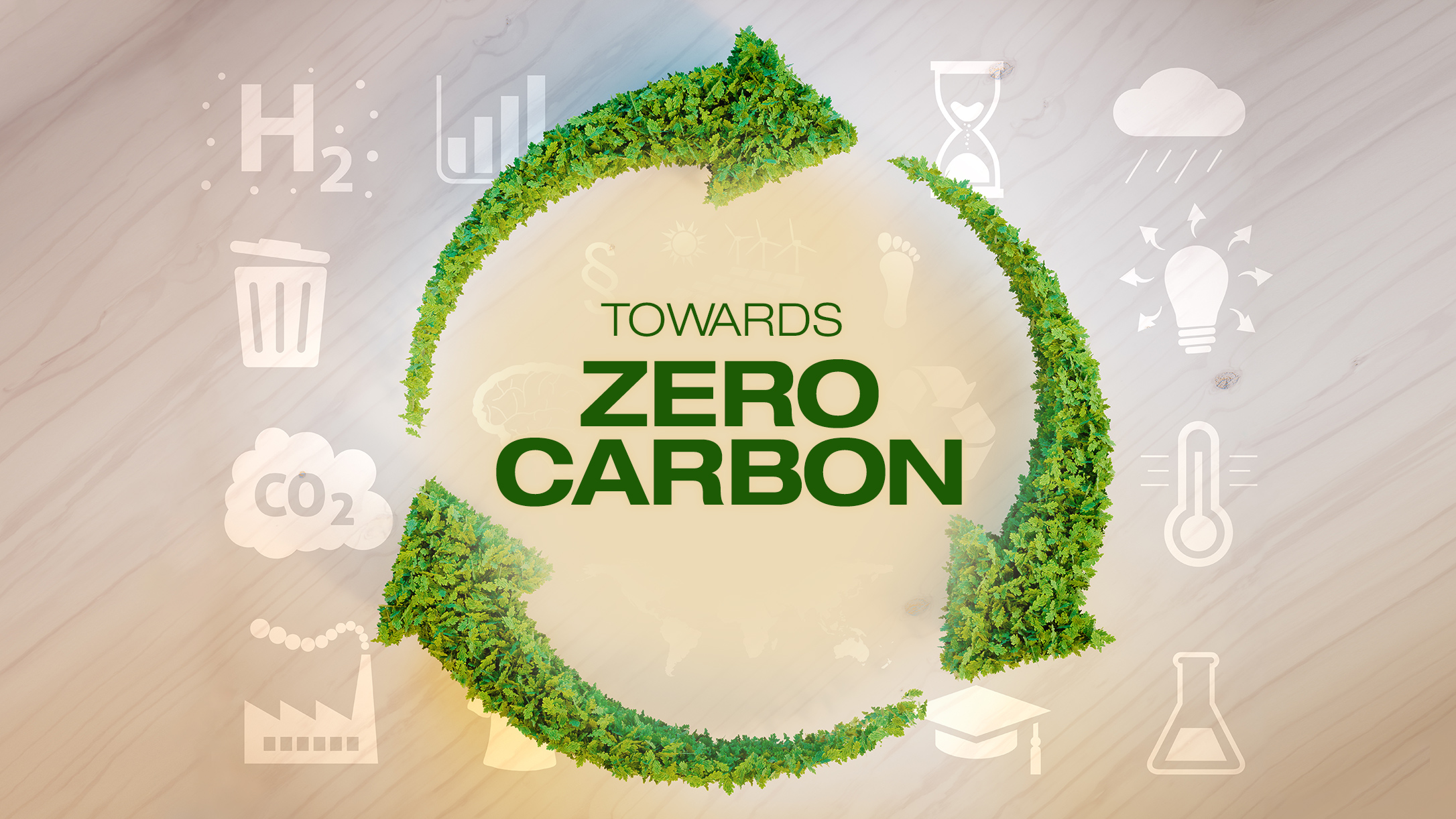
Given the need to build a sustainable society, Kubota has formulated GMB2030, its long-term vision toward various societal issues that may arise in the future and the roles Kubota should fulfill with them.
This GMB2030 focuses on four megatrends in society: a circular economy, carbon neutrality, a society in which the marginal cost of products is close to zero through recycling and sharing, and formation of new small- and medium-sized communities that are not obsessed only with global capitalism. Here, we will focus on the carbon neutrality megatrend.
Today, companies around the world are putting forth their stances on carbon neutrality, and movements toward a carbon-free society are accelerating. Here we will give some background on these movements aimed at global environmental preservation, along with details on Kubota’s efforts in both the past and future to take on the challenge of carbon neutrality and achieve a sustainable society.
International Movement toward Carbon Neutrality and Its History
Global warming is now considered a global-scale societal crisis, causing abnormal weather events in various parts of the world. The increase in greenhouse gases is believed to be its main cause. Greenhouse gases include carbon dioxide (CO2), methane, and chlorofluorocarbons (CFCs), and among these, minimizing CO2 emissions is said to be the most effective initiative for protecting the global environment.
The term carbon neutral refers to achieving net-zero CO2 emissions through reduction activities as well as capture activities such as nature conservation and increasing green space in cities that make up the difference when emissions are unavoidable. A society that achieves net-zero emissions is called a decarbonized, or carbon-free, society.

Full-scale global efforts to combat global warming began with the United Nations Framework Convention on Climate Change (UNFCCC) adopted at the Earth Summit in 1992. Also called the convention to limit global warming, this international framework for combating temperature rise continues to this day, providing the basis for the Kyoto Protocol adopted in 1997. It set specific targets for the reduction of greenhouse gases, including numerical targets for developed countries and a target achievement period.
While the Kyoto Protocol sets global warming reduction targets until 2020, the Paris Agreement, which was adopted at the Conference of the Parties (COP 21) to the UNFCCC in 2015, sets targets for 2020 and beyond. The Paris Agreement’s goal is to keep the average global temperature rise below 2 degrees Celsius above pre-industrial levels, and to limit the increase to 1.5 degrees if possible.
To keep the average temperature rise below 1.5 degrees Celsius, net global emissions of the major greenhouse gas CO2 must be reduced to effectively zero by 2050. The efforts toward carbon neutrality now seen in countries and regions throughout the world are backed by the international movements for environmental preservation outlined above, and concrete efforts are already under way, including the promotion of solar and other forms of renewable energy, carbon recycling that reuses CO2 as material or fuel, and other innovations.
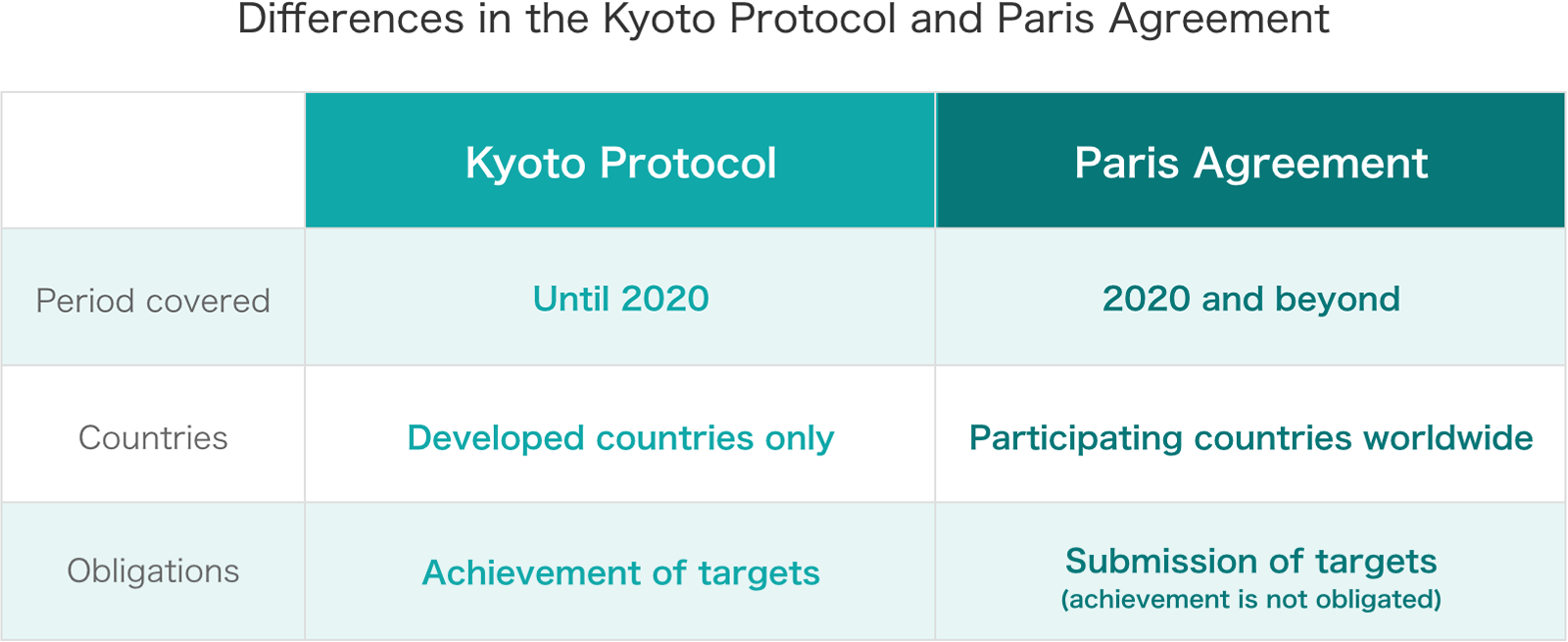
More than 120 countries and territories, along with global corporations and other parties, have announced emissions reduction targets based on the Paris Agreement. Meanwhile, Japan said in October 2020 that it would cut its overall greenhouse gas emissions to zero by 2050. Public and private efforts to realize a carbon-free society are now officially under way.
Conscious of the Earth’s Cycle of Nature, Kubota Takes on New Challenges
From the first successful domestic mass-production of cast iron water supply pipes as a measure against cholera and other infectious diseases to continued contributions toward efficiency and labor-saving through the mechanization of agricultural work, Kubota has worked for many years to realize sustainability in society through its businesses, and environmental conservation efforts including measures toward climate change are a major theme of its corporate activities.
Kubota announced its long-term vision called GMB2030 in February 2021, and in May it set its Environmental Vision, which indicates the direction of Kubota’s business activities from an environmental perspective. Positioning ESG* as the core of its management approach, Kubota has pledged to pursue zero environmental impact while contributing to the realization of a carbon-neutral and resilient society in the fields of food, water, and the environment.
- * An abbreviation for Environment, Social, and Governance, the three elements required for long-term corporate growth.
In terms of the orientation for its efforts to realize the Environmental Vision, Kubota has put forward “reducing CO2 emissions from the Kubota Group” based on emissions throughout entire product life cycles, and “reducing CO2 emissions from society” through new solutions and other means. It has officially launched its initiatives with the goal of net-zero CO2 emissions by 2050.
Reducing CO2 Emissions from the Kubota Group
In order to reduce the CO2 emitted from Kubota’s group companies, primarily production centers, the company has started initiatives toward energy- and resource-saving through production reforms. These include expanded use of renewable energy through purchasing of solar power generation systems and green electricity, and the adoption of production methods with less environmental impact during the reorganization or relocation of production centers. Some of its specific moves toward decarbonization can already be seen, including the announcement by some factories that they will introduce electric furnaces in conjunction with reforms to their production lines.
Additionally, to reduce CO2 emitted during the use of products, Kubota will aim for further improvements in fuel efficiency for its agricultural and construction machinery by developing products that can do more work with less energy use. And it is also taking on the challenge of research and development for decarbonizing power sources, including the addition of robotics to agricultural machinery and the use of ICT (Information and Communication Technology) to reduce the environmental impact of precision agricultural work, and also the use of biofuels along with increased efforts toward conversion to electric, hybrid, and fuel cell power.

Reducing CO2 Emissions from Society
In the 130 years since its founding, Kubota has consistently contributed to solving problems in the areas of food, water, and the environment, which are indispensable for human beings. Going forward, it aims is to stay committed to a prosperous society and the cycle of nature through its business activities, and Kubota has announced three new solutions as part of its long-term vision GMB2030.

These three solutions are extensions and developments of Kubota’s existing businesses, and each will be realized through synergies born from the mutual collaboration and interaction of its many technologies and expertise it has accumulated in its business domains.
The efforts to reduce CO2 emissions from society will be endeavors in keeping with the orientation of these solutions. Here are some specific examples of solutions that will lead to the creation of new value.
The first is Kubota’s efforts to advance smart agriculture using ICT and AI. These are represented by the KUBOTA Smart Agri System (KSAS), a support system for farm management that improves work efficiency through the use of robotics and IoT in agricultural machinery, thereby achieving savings in energy and resources. This will also contribute to curbing deforestation and other natural destruction for the purpose of farmland expansion.
The second is resource recycling solutions. From upstream to downstream, Kubota has been supporting water infrastructure throughout the world. Applying the technologies it has worked to innovate since its founding, Kubota will take on initiatives such as fermenting waste generated at sewage treatment plants, food production factories and other locations and extract biogas, which will be reused as an energy resource and applied toward power generation.
The third is building water and environment platforms. This field is represented by the KUBOTA Smart Infrastructure System (KSIS), a service for remote monitoring, diagnostics, and control of water and environmental plants and equipment. For this field, the company will put together a monitoring and management platform for water supply and sewage facilities and river flood levels using plant information and sensors to improve cities’ resilience against disasters. Kubota aims to contribute to energy-saving by providing this solution.
Working with Multiple Stakeholders toward Zero Environmental Impact
In January 2020, Kubota expressed its support for the recommendations of the Task Force on Climate-related Financial Disclosure (TCFD). And in December of that year, Kubota joined the Hydrogen Value Chain Promotion Council and began its initiatives toward the social implementation of hydrogen technologies that contribute to CO2 reduction.

As demand for food and water will likely increase with the global population rise, and energy demand is predicted to grow with urbanization, cooperation with a variety of stakeholders will be essential. The new challenges that Kubota is taking on are an expression of the company’s strong will to effectively use limited resources through environmentally-conscious products, technologies, services, and corporate activities, and to contribute to zero environmental impact throughout the value chain.

